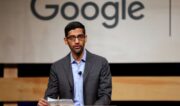YouTube has contacted the Federal Trade Commission (FTC) in an apparent attempt to mitigate the potential income losses and legal trouble creators could suffer if a COPPAcalypse comes to pass.
What’s a COPPAcalypse? Well, it all stems from YouTube’s recent $170 million settlement with the FTC, where the agency determined there is an unknown number of children under the age of 13 watching content on YouTube with accounts that appear to belong to users over 13. This means they’re being treated as if they’re over 13 — so, their personal data is being collected and then (primarily) used to deliver personalized ads, which is a blatant violation of the Children’s Online Privacy Protection Act, aka COPPA.
Because it’s virtually impossible for YouTube to identify every single actually-under-13-year-old amongst its more than 2 billion monthly active users, the FTC’s settlement stipulates that, beginning Jan. 1, 2020, YouTube creators must manually designate every single one of their uploads (both past and future) as either “child-directed” or not. Child-directed videos will immediately have personalized ads — which bring creators more revenue and are more common than non-personalized ads — turned off. This is designed to broadly prevent any under-13 viewers from having their data collected and used.

Subscribe for daily Tubefilter Top Stories
We’ve previously published data from early tests that showed turning off personalized ads could sap between 60% and 90% of kid-friendly content creators’ income. But, crucially, a COPPAcalypse could impact even creators who aren’t purposefully producing videos for kids. Here’s why: the FTC currently wants to expand the already-broad definition of “child-directed” content to include content that’s “child-attractive.” So, not only will content actually made for kids have personalized ads disabled, but content about literally anything that a child might want to watch will have to be marked child-directed and have ads disabled, too. Toy reviews meant for adults? Disabled. Minecraft Let’s Plays? Disabled. Without clear guidelines, the reach could be almost endless.
And there’s one more significant danger for YouTubers caught in the crosshairs of the FTC/YouTube settlement stipulations: from January onward, if the FTC finds what it believes are COPPA violations, it will crack down on individual creators. (It’s not clear yet whether that’s with fines or something else or both.) This is an entirely new kind of enforcement, as the FTC has always gone after platforms as a whole.
If the FTC expands the definition of child-directed to include child-attracted and decides to go forward with targeting individual creators for purported COPPA violations, then even creators who upload videos they do not at all intend for children to watch might face consequences if the FTC thinks those videos could appeal to kids.
Protecting kids & their privacy is important. Today, we submitted our Comment on COPPA to the FTC. We strongly support COPPA & believe it would benefit from updates & clarifications that better reflect how kids & families interact w/ tech today. More here: https://t.co/UakE5EYPJV
— YouTube Creators (@YTCreators) December 9, 2019
2. We support allowing platforms to treat adults viewing primarily child-directed content as adults with measures to help confirm the user is an adult.
— YouTube Creators (@YTCreators) December 9, 2019
If you’re also interested in submitting your own comment to the FTC, the deadline to do so is Dec 11: https://t.co/o6GXjU6rRa or via email with the subject line “COPPA comment” to secretary@ftc.gov.
— YouTube Creators (@YTCreators) December 9, 2019
With all that in mind, YouTube has submitted an official comment to the FTC during its open period for feedback on the Jan. 1 COPPA changes, touching on the expansion of “child-directed” content and its intention to enforce guidelines against creators.
“Many creators have expressed concern about the complexity of COPPA, their ability to comply with it, and its effect on the viability of their businesses,” the platform wrote in a Creator Blog post about the feedback. “Questions range from what content is directed at children, to how to treat adults who might be watching kids content. This is particularly difficult for smaller creators who might not have access to legal resources. Balanced and clear guidelines will help creators better comply with COPPA and live up to their legal obligations, while enabling them to continue producing high-quality kids content that is accessible to everyone, everywhere.”
YouTube is primarily asking the FTC to provide “more clarity about when content should be considered primarily child-directed, mixed audience, or general audience.” It noted that, “Sometimes, content that isn’t intentionally targeting kids can involve a traditional kids activity, such as DIY, gaming, and art videos. Are these videos ‘made for kids,’ even if they don’t intend to target kids? This lack of clarity creates uncertainty for creators.”
The platform wants the FTC to consider not only “the actual content of the video, but also its context” when judging whether creators’ uploads are actually directed at kids, and also said that treating all viewers watching kid-directed content as if they’re under 13 “does not match what we see on YouTube, where adults watch favorite cartoons from their childhood or teachers look for content to share with their students.”
Ultimately, “We strongly support COPPA’s goal of providing robust protections for kids and their privacy. We also believe COPPA would benefit from updates and clarifications that better reflect how kids and families use technology today,” YouTube said.
The FTC’s period for COPPA comments (where it takes feedback from the public about proposed policy changes and may shift those changes based on the feedback it receives) ends on Dec. 11. YouTube is urging creators and users to also leave feedback for the commission on this designated page. (Note: At press time, the page is down.)
For guidance on what to say to the FTC, you can find lists of talking points (provided to Tubefilter by creator community lawyer Jonathan Katz and startup consultant Victoria Fener) for both creators and viewers, along with a comment template, here.








